Everyone has walked past larger or smaller switchboards. At first moment, these electrical objects may seem unimportant, but they play a vital role in keeping our lives and work running smoothly. Because we depend on electricity, the role of switchboards is more important than ever. Their function is not only to distribute electricity to smaller networks, but also to protect telecommunications, IT systems, electrical equipment and, of course, people's lives. Problems can arise when a switchboard is not installed correctly or is not designed for the application. When designing them, one of the challenges engineers face is the impact of the external environment. Dust, mud, snow, rain, extreme cold or even direct sunlight can affect the operation of electrical networks. As you read on you will notice that this article will cover the reasons why ventilation and heating of the switchboard needs to be done.
Contents:
An electrical switchboard is a piece of equipment whose primary function is to distribute, manage and protect electricity. This equipment is used in any commercial, industrial or residential facility to organise and control the flow of electricity to different parts of the electrical system. A switchboard provides a means of dividing incoming electricity into smaller units. The switchboard is the main part of the electrical supply system of your home, factory or any other facility. Simply put, the main electricity cable is connected to the switchboard and the electricity is further divided into smaller circuits that help to use the electricity optimally according to the operating needs of each appliance.
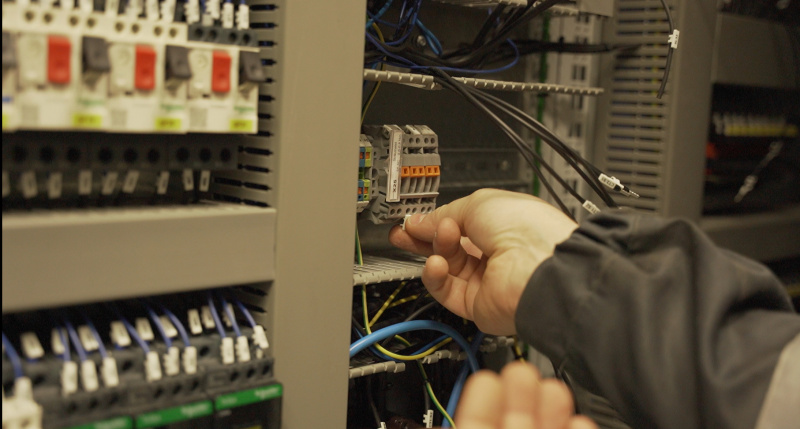
Most switchboards are universal. They can be purchased with empty enclosures, ready-to-use or specially designed to meet individual project requirements. See below for a broad breakdown of switch cabinets and information on the range of products available from ZTF Lāsma.
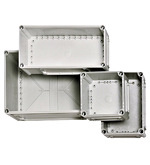 Junction boxes are the simple and small. These boxes can be divided into two large groups - over- and under-mounted electrical boxes.
Junction boxes are the simple and small. These boxes can be divided into two large groups - over- and under-mounted electrical boxes.
Both types of mounting boxes are mainly made of plastic, but metal is also available - they are mainly intended for outdoor use.
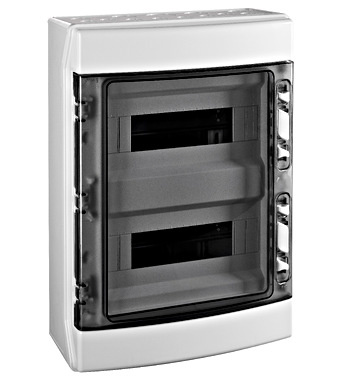 Plastic distribution boards are mostly used in private homes, apartments and offices. They are usually small boxes embedded in the wall. They are most often found in corridors, cloakrooms, hallways or garages. These boxes contain circuit breakers or automatic electricity supply machines. Very often, in everyday language, they are also called fuses. These switchboards can be in different sizes. This is determined by the complexity of the wiring in the building or room, as well as the number of rooms and their surface area.
Plastic distribution boards are mostly used in private homes, apartments and offices. They are usually small boxes embedded in the wall. They are most often found in corridors, cloakrooms, hallways or garages. These boxes contain circuit breakers or automatic electricity supply machines. Very often, in everyday language, they are also called fuses. These switchboards can be in different sizes. This is determined by the complexity of the wiring in the building or room, as well as the number of rooms and their surface area.
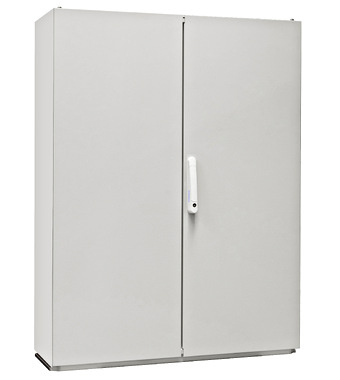 Metal electrical distribution boards or switchboards are divided into two large groups - wall-mounted and floor-mounted.
Metal electrical distribution boards or switchboards are divided into two large groups - wall-mounted and floor-mounted.
Both types of metal cabinets are mainly designed for industrial environments or large facilities. They are highly resistant to mechanical damage and the stainless steel switchboards in this group are also resistant to corrosion, which some industrial environments can produce.
As electrical switchboards are installed both indoors and outdoors, ventilation or heating is required. This is one of the most important aspects to be considered in the construction of switchboards. Heating and/or ventilation can ensure the safety and durability of electrical appliances and components in the switchboard. It should be remembered that the components must not exceed the minimum and maximum temperatures specified by the manufacturer. A thermostat is also an excellent tool for automatically controlling the operating torques.
In a switchboard, multiple components operating at the same time increase their temperature. This can lead to increased temperatures inside the cabinet, which can damage installed equipment, such as melting wires. It is important to choose a suitable cooling solution to prevent overheating of the electrical components.
Condensation can form inside the electrical cabinet. This happens when the temperature difference between the surrounding environment and the inside of the cabinet is too high. Condensation can not only cause unwanted corrosion, but can also compromise electrical safety and cause damage to electrical equipment. Special switchboard heaters help to maintain the required temperature, thus preventing condensation.
Natural convection heater - Natural convection is a way of heating a switchboard using air that circulates naturally, without the need for a mechanical ventilation system. This type of heater is usually passive and uses special heat emitting plates to maintain a stable temperature inside the cabinet. Natural convection heaters are energy-efficient long-term solutions that do not require a fan.
The thermostat can be used to control the fan and/or the heater. By adjusting their operation according to temperature changes, safe use of electrical components can be achieved.
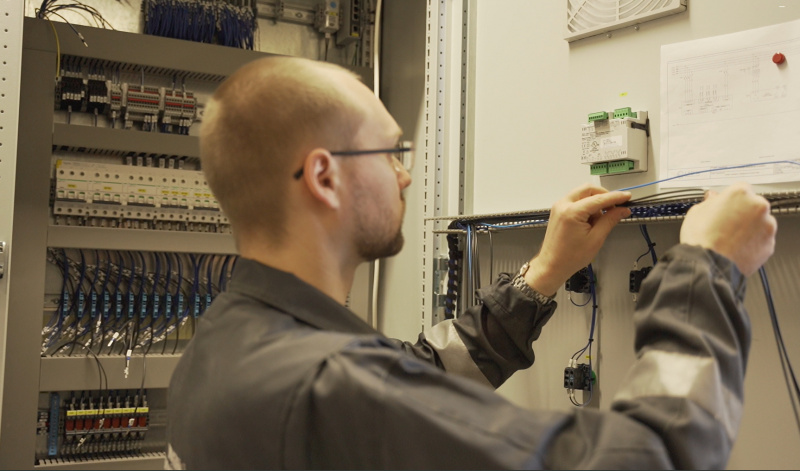
Let's start by saying that only a certified electrician or engineer can install a switchboard.Let's start by saying that only a certified electrician or engineer can install a switchboard.
The main task of a switchboard is not only to distribute electricity, but also to ensure the safety of people and buildings. It is important to install electrical distribution panels at least 2200 mm above the floor, as stated in the electrical regulations, and to take care not to locate them close to water or areas that can flood.
It also goes without saying that electrical distribution cabinets should be arranged so that no wires are outside the cabinet. To avoid corrosion of the wires, cabinets should be well ventilated. The cabinet should be marked with appropriate safety signs so that children, young people and others can recognise it and avoid touching it. This will prevent possible accidents.
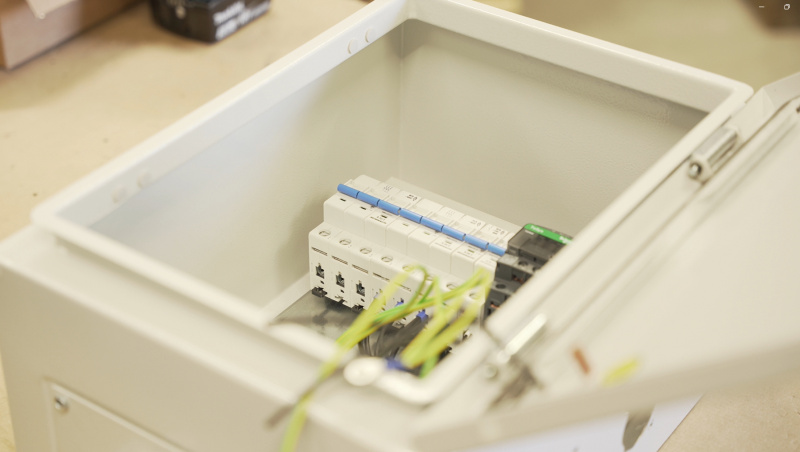 It is important to comply with all safety regulations and other aspects specified by the manufacturer when using electrical switchboards. This will reduce potential risks and improve your safety as well as the safety of others.
It is important to comply with all safety regulations and other aspects specified by the manufacturer when using electrical switchboards. This will reduce potential risks and improve your safety as well as the safety of others.
Please note that the switchboards offered by ZTF LĀSMA from manufacturers Schneider Electric and Schrack Technik are certified and comply with all safety regulations and standards, and many of them are available from stock on site. It is worth mentioning that they are in demand and recognised among electrical professionals.
